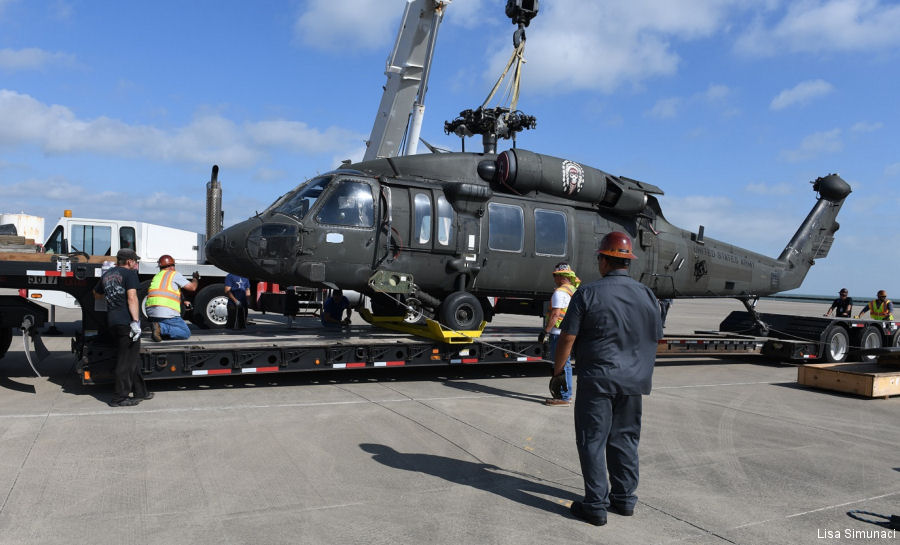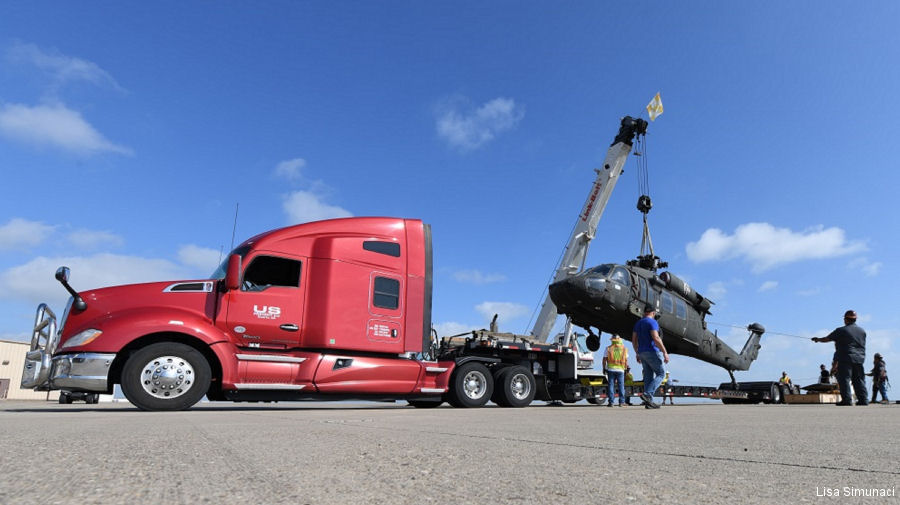
Advanced manufacturing refers to new ways of making existing products and the production of new products using advances in technology. Advanced manufacturing includes additive manufacturing, a process of joining materials to make parts from 3D-model data. Additive manufacturing differs from the traditional subtractive process that cuts away material to shape and produce parts.
The U.S. Army Aviation and Missile Command recently published a policy memorandum addressing advanced manufacturing for Army aircraft parts, components and support products.
“Evolving technologies create a unique challenge as we determine the airworthiness of parts when the data is immature, incomplete or even non-existent,” said AMCOM Commander Maj. Gen. Todd Royar, who serves as the Army’s airworthiness authority, responsible for ensuring the safety of the service’s aircraft components.
As enduring aircraft, like the UH-60 Black Hawk helicopter, continue in service, the supply system with face challenges with obsolescence, meaning parts that are difficult to acquire or receive no bids from potential vendors to manufacture. As the Army keeps pace with technology, advanced manufacturing creates opportunities to optimize long-term sustainment efforts.
The Army established a partnership recently with Wichita State University’s National Institute for Aviation Research (NIAR) to create a “digital twin” of an aging Black Hawk model.
“One of the primary tasks in this effort is to convert all legacy 2D drawings of this aircraft into modern 3D parametric models,” said John Tomblin, senior Vice-President for Industry and Defense Programs and Executive Director of NIAR at Wichita State University. “This will allow the Army to source parts that are out of production as well as use advanced techniques, such as additive manufacturing, to produce parts.” The digital twin opens a door to the 3D modeling and more opportunities to use parts made through additive manufacturing.
The NIAR project is not the Army’s only effort. Army Aviation is already using advanced manufacturing methods and 3D-printed parts to solve specific challenges. When several CH-47 helicopters experienced structural cracks at a certain portion of the frame assembly, an initial solution was to replace the entire frame assembly.
“Replacing the entire assembly is a time-consuming task that also poses logistical challenges because replacements are difficult to obtain,” said AMCOM’s Aviation Branch Maintenance Officer, Chief Warrant Officer 5 Michael Cavaco.
Instead, engineers designed a solution to restore the cracked frames to their original strength by creating repair fittings using Computer-Aided Design models.
3D-printing prototypes
“After five iterations of 3D-printing prototypes, test fit and model adjustments, a final design solution was achieved,” Cavaco said. Additionally, 3D printers have created several tools and shop aids that have benefitted the field. Many of these stand-alone items that support maintenance operations are authorized within Army technical manuals, depot maintenance work requirements or similar publications.
While too early to predict overall cost and time savings, the advantages of advanced manufacturing are significant. The use of advanced manufactured parts will eliminate wait time on back-ordered parts that, ultimately, delay repairs.
A key focus of AMCOM’s AM policy is on inserting evolving technologies into enduring designs that have relied on traditional manufacturing processes throughout their acquisition lifecycle. However, future Aviation are benefiting as well from advanced manufacturing.
The Improved Turbine Engine Program (ITEP) includes a number of advanced manufacturing elements.
“ITEP benefits from advanced manufacturing include reduced cost, reduced weight, increased durability, and enhanced performance when compared to traditional manufacturing methods,” said Col. Roger Kuykendall, the project manager for Aviation Turbine Engines. “The benefits of AM stem from the unique capability to produce more complex hardware shapes while simultaneously reducing part count.”
The fine details of airworthiness expectations asserted in this policy were crafted by a team of engineers at the U.S. Army Combat Capabilities Development Command Aviation and Missile Center, led by Chris Hodges, the current acting associate director for Airworthiness-Technology.
Hodges said the new policy was drafted after his team collaborated with stakeholders from across the aviation enterprise, reaching across Army organizations and out to sister services and the Federal Aviation Administration.
“We considered a lot of input and ultimately organized expectations and requirements by category, spanning from tools and shop aids to critical safety items,” Hodges said. “The resulting policy sets a solid foundation with room to grow and fill in details as the story evolves.”
For Army aviation applications, advanced-manufactured parts and components will be managed under six categories that range from articles that support maintenance operations to those aviation critical safety items, whose failure would result in unacceptable risk. The designated categories prescribe for engineers and manufacturers the allowed materials and appropriate testing methodology for each particular part.
The new guidance is not intended as a replacement for other existing policies that address advanced manufacturing.
“We intend to be in concert with Army policies and directives that pertain to readiness, maintenance and sustainment,” Royar said. “Our policy provides a deliberate approach to ensure airworthiness and safety while determining where research and efforts may best supplement the supply chain and improve performance while balancing cost.”
AMCOM Command Sgt. Major Mike Dove acknowledged the methodology must continue to mature in multiple areas before confidence grows in the ability to measure airworthiness qualification requirements for advanced-manufactured parts.
“We fully support the maturation requirements for advanced-manufacturing technology, but not at the expense of flight safety,” Dove said. As Army aviation continues to pursue and include advanced-manufacturing methods, Royar noted the potential impact as the technology evolves. “Advanced manufacturing touches units, depots and the broader supply chain,” Royar said. “As we sustain our enduring aircraft and look to future systems, it is important that we keep pace with this and other emerging technologies for the sake of the warfighter.”

A UH-60L Black Hawk was transported from Corpus Christi Army Depot to Wichita State University where researchers at the National Institute of Aviation Research (NIAR) will create a virtual model
See also |
ITEP engine
Black Hawk in
CCAD
Osprey First Flight with 3D Printed Parts




